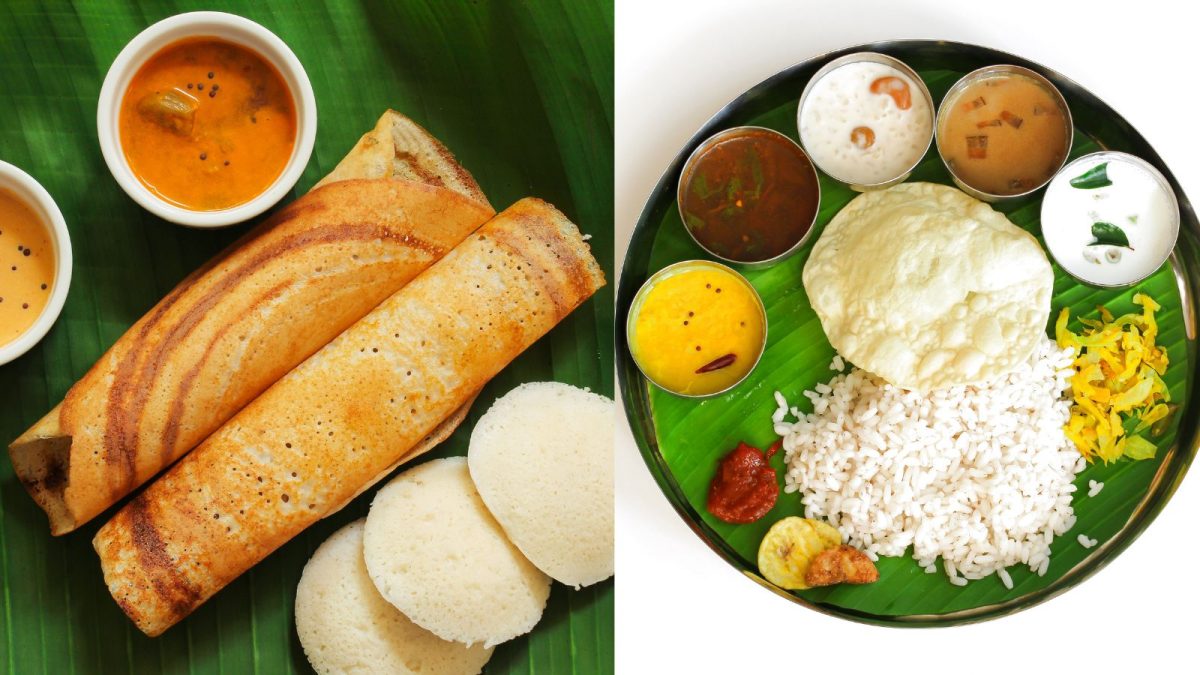Last Updated:
South India is ground zero for refined-cereal-heavy diets: steamed rice is the backbone of breakfast, lunch, dinner. The shift there would have outsized returns.

This study isn’t a prescription for drastic diet overhauls. It’s a whisper: shift gently, but meaningfully. (Image: Google)
You walk into a vegetarian Tamil home at midday and smell rice steam rising in the kitchen. You’ll find idlis or dosas on the plate, sambar dabbling around them, maybe a scoop of curd. Carbs reign.
But what if scientists told you that cutting just a little bit of those refined carbs and replacing them with protein could shift your diabetes risk? That’s exactly what India’s largest diet study led by ICMR (Indian Council of Medical Research) and NIN (National Institute of Nutrition), in collaboration with Madras Diabetes Research Foundation is hinting at now.
Recommended Stories
62% of Calories from Carbs? That Has to Change
The diet profiles emerging from the ICMR‑INDIAB survey shocked many in health circles: on average, 62 percent of Indians’ daily calories come from carbohydrates, overwhelmingly refined ones like white rice, polished cereals, and added sugars. In contrast, protein contributes only about 12 percent of caloric intake on average. In parts of the South, where rice is sacred, that ratio is even more extreme.
Dr. V. Mohan, senior author and head of the MDRF, has spoken about the urgency of this imbalance. He says the findings should do more than just alarm us. They should inspire policy, subsidy realignment, and a shift in how food is taught and eaten in Indian homes.
“These nationwide findings should inspire policy reforms, help Indians shift towards diets richer in plant-based and dairy proteins, and lower in carbohydrates and saturated fats,” he said in the study’s release commentary.
Another voice, Dr. R. M. Anjana of MDRF, cautions that simply going from white rice to whole wheat or millet isn’t enough. “Switching from white rice to millets or whole wheat is not enough unless total carbohydrate intake decreases and more calories come from plant or dairy proteins,” she emphasizes. In other words: the plate must be rebalanced, not just relabeled.
The 5% Swap: Small Change, Big Promise
If these numbers make you want to rewrite your diet, hold on. The study’s intervention is elegantly modest. The researchers modeled a diet where just 5 percent of carbohydrate energy (not just any carbs, but refined ones) is replaced by protein (from pulses, dairy, eggs, or fish). And that small shift already showed statistically significant reductions in the risk of type‑2 diabetes and prediabetes in modeling.
That’s key: this was not a controlled feeding trial with volunteers, but a modelled scenario based on dietary and health data from more than 18,000 adults. The data came from food frequency surveys, health markers, and metabolic screenings across urban and rural India. The idea: what if standard diets were nudged gently in a better direction, what difference would it make?
What they found: people in the highest carbohydrate bracket had a 30 percent higher risk of newly diagnosed diabetes, compared to those in the lowest. And the best gains came when the swaps were toward plant and dairy proteins.
Swapping carbs for fats or red meat didn’t show the same protective effect. This suggests a nuanced message – it’s not enough to just reduce carbs, but to replace them wisely.
How It Might Play Out in Your Plate
Now imagine this applied in the kitchens of Chennai, Madurai, Palakkad or Bengaluru. It’s not about scrapping rice outright, too many hearts and habits would rebel. Instead, it might look like:
- Reducing one small scoop of rice at lunch and dinner, and boosting dal, moong sprouts, or a side of curd with pulses.
- Tweaking the idli-dosa batter to include more lentils, chickpea flour, or even mashed moong so that rice takes a back seat.
- Fortifying curries and sambar with extra grams, peas, paneer, or soya bits, so you get more protein without feeling deprived.
- Serving eggs, low-fat paneer, or yogurt as sides that complement, not compete with, the carbohydrate base.
In practice, a “5 percent swap” might simply mean one fewer ladle of rice and one more ladle of dal or pulses, a shift felt but perhaps not noticed, yet science believes it’s enough to tilt risk curves.
What Stands in the Way
This isn’t just about diet science, it’s about money, culture, habit, and policy.
Affordability: In many places, pulses, dairy, and eggs cost more than subsidised rice or wheat. A family with tight budgets may find it harder to sustain protein-rich swaps daily.
Taste and acceptability: Households are accustomed to soft idlis, tangy rasam, mild sambar drastic textural or flavour changes may be resisted. If the dal is too strong or the batter changes texture, elders may refuse.
Subsidy systems and food programs: Many government schemes subsidize cereals heavily but not pulses or dairy. Unless food subsidies shift, low-cost carbs will stay dominant.
Modeling vs real life: The 5 percent swap is based on modeling, not real-life diet interventions. Real-world compliance, cultural mixing, and food environment biases will affect outcomes.
But experts believe those obstacles aren’t insurmountable, they just require coordinated policy, education, and community adaptation.
Why It Matters Most in the South
South India is ground zero for refined-cereal-heavy diets: steamed rice is the backbone of breakfast, lunch, dinner. The shift there would have outsized returns. Since refined cereal intake is among the highest in the South, even small per‑person changes could scale into major public health returns in Tamil Nadu, Andhra Pradesh, Karnataka, and Kerala.
And consider where diabetes already bites hardest: states in the South have among the highest rates of metabolic disease in India. If diet tweaks can inch prevalence down, the state health systems, hospital burden, and families would all gain.
A Way Forward, Gently
This study isn’t a prescription for drastic diet overhauls. It’s a whisper: shift gently, but meaningfully.
Start with the small swaps at mealtime. Let kitchens experiment: batter ratios, extra pulses in sambar, side protein dishes. Use public health messaging, school programs, and subsidized pulses to make the swaps easier to adopt.
If policy changes follow subsidies favoring pulses, food relief programs offering bean mixes, school lunch protein boosting, then what is now a scientific model might become a movement. South Indian plates, rich in history and flavour, may slowly evolve to include more protection against diseases.
Because sometimes, the biggest change comes not from abandoning culture, but from rebalancing it just enough.
October 06, 2025, 11:17 IST
Loading comments…
Stay Ahead, Read Faster
Scan the QR code to download the News18 app and enjoy a seamless news experience anytime, anywhere.

login
Go to Source
Author: News18



)